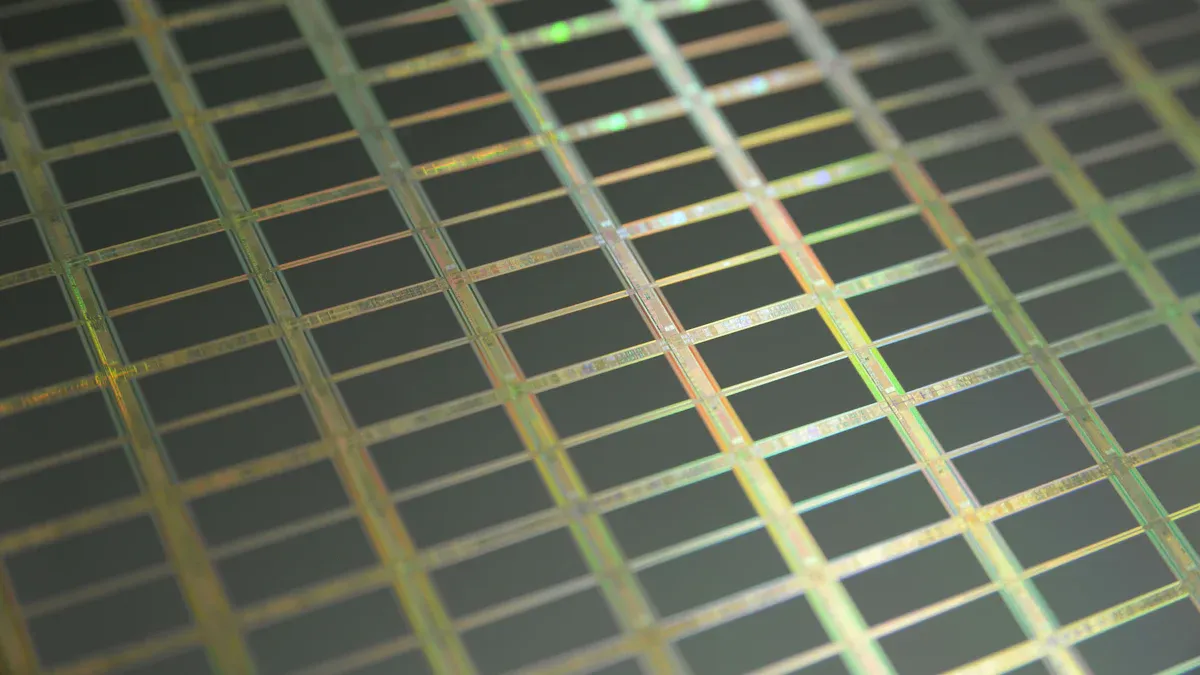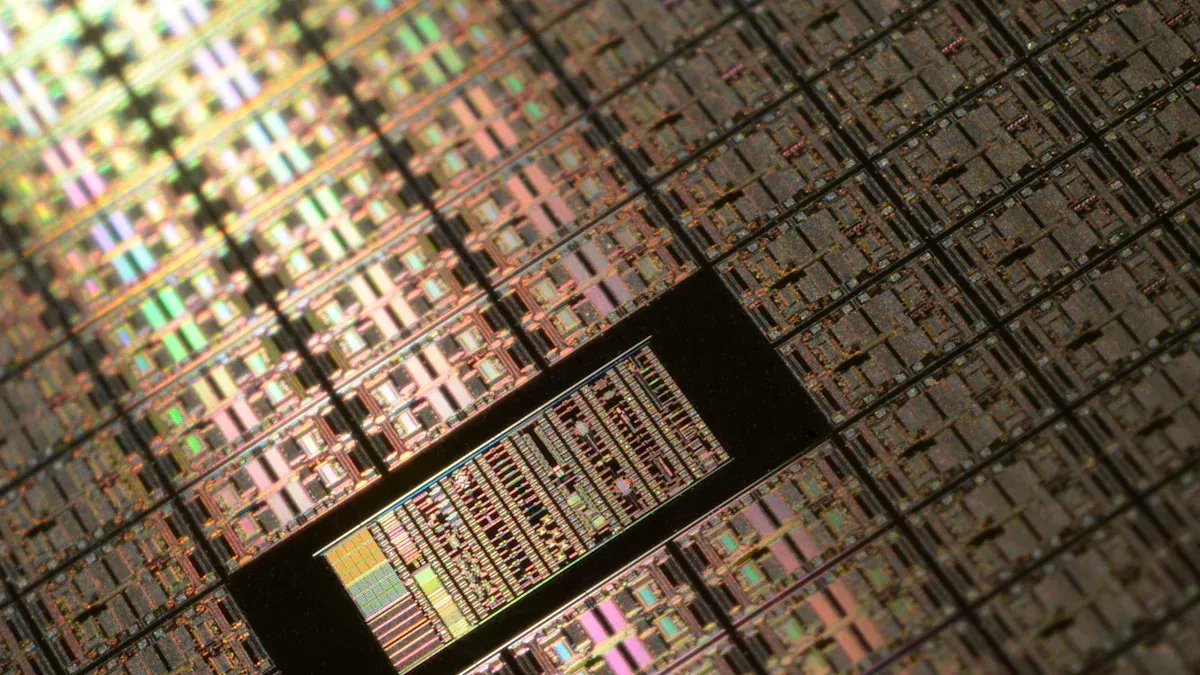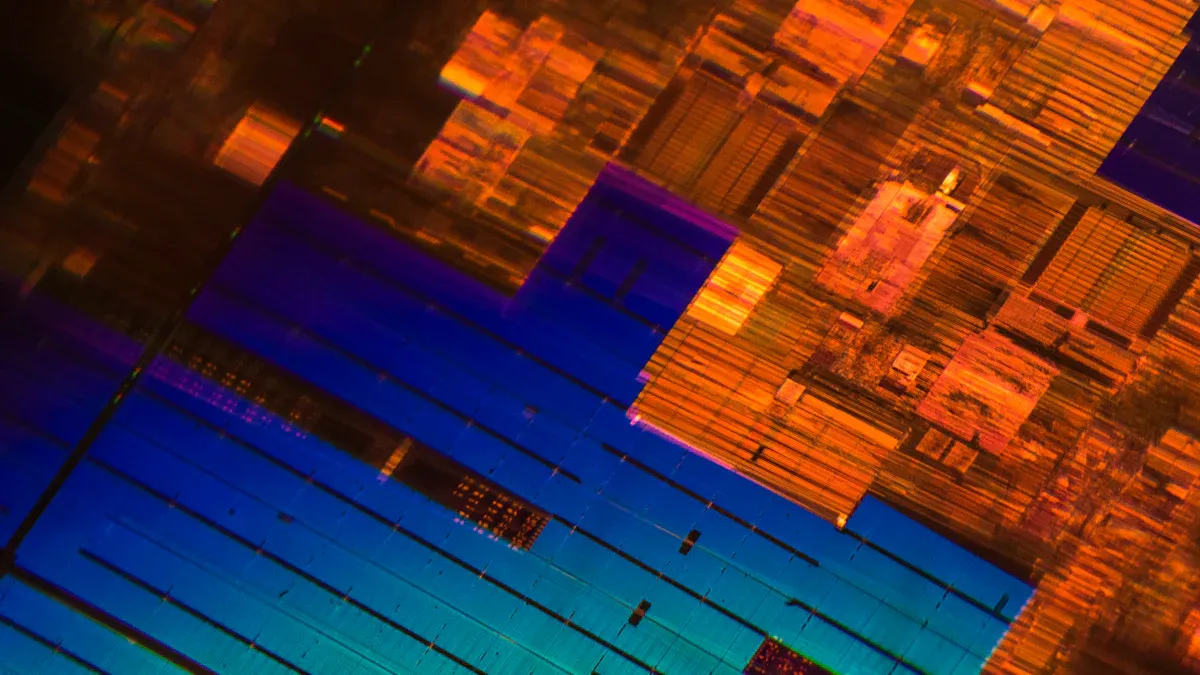
You use 6 Inch Silicon Carbide when you need strong and reliable materials in industry. This material stands out for its hardness and ability to handle high temperatures. Many factories choose china 6 Inch Silicon Carbide for its quality and cost advantages.
SiC Coated Graphite offers extra durability for demanding processes.
Key Takeaways
- 6 Inch Silicon Carbide offers extreme hardness, high heat resistance, and chemical stability, making it ideal for tough industrial environments.
- The 6 inch wafer size balances cost and performance, allowing more chips per wafer and easier handling for efficient large-scale production.
- This material improves power electronics, LED manufacturing, and high-temperature applications by boosting energy efficiency and device lifespan.
- Choosing reliable suppliers with quality certifications and strong support ensures you get high-purity wafers and better production yields.
- Using 6 Inch Silicon Carbide helps reduce costs, increase device reliability, and supports sustainable practices in modern industries.
6 Inch Silicon Carbide Properties and Specifications

Material Characteristics
You will find that silicon carbide stands out because of its unique material properties. This compound combines silicon and carbon atoms in a strong crystal structure. You can rely on it for its extreme hardness, which is almost as high as diamond. It resists wear and scratching, so you can use it in tough environments. Silicon carbide also handles high temperatures well. It does not melt easily, and it keeps its strength even when things get hot. You will notice that it does not react much with chemicals, so it lasts longer in harsh settings.
Tip: If you need a material that stays strong under pressure and heat, silicon carbide is a smart choice.
Technical Specifications
When you look at the technical side, you see that 6 Inch Silicon Carbide wafers have clear standards. Here are some key specifications you should know:
| Property | Typical Value |
|---|---|
| Diameter | 150 mm (6 inch) |
| Thickness | 350-500 µm |
| Crystal Structure | Hexagonal (4H or 6H) |
| Resistivity | 0.015 – 0.02 Ω·cm |
| Thermal Conductivity | 3-4.9 W/cm·K |
| Hardness (Mohs) | 9-9.5 |
| Bandgap | 2.3 – 3.3 eV |
You can use these wafers for high-power and high-frequency devices. The wide bandgap lets you build electronics that work faster and use less energy. The high thermal conductivity helps your devices stay cool.
Significance of the 6 Inch Format
You might wonder why the 6 inch size matters. The 6 inch format gives you a good balance between cost and performance. You can make more chips from each wafer compared to smaller sizes. This means you can lower your production costs. At the same time, the 6 inch size is easier to handle than larger wafers, so you get fewer defects and higher yields.
- You can scale up your manufacturing without big changes to your equipment.
- You get better efficiency in your production lines.
- You can meet the growing demand for power electronics and other advanced devices.
Note: Many industries now choose the 6 inch format because it supports both quality and large-scale production.
Industrial Applications of 6 Inch Silicon Carbide

Power Electronics
You see 6 Inch Silicon Carbide used in power electronics because it handles high voltages and currents very well. Devices like MOSFETs and Schottky diodes use this material to switch power quickly and with less heat. You can find these devices in electric vehicles, solar inverters, and industrial motor drives. When you use this material, your systems run cooler and last longer. You also save energy because the devices waste less power as heat.
Tip: If you want to improve energy efficiency in your power systems, consider using silicon carbide-based components.
LED and Optoelectronics Manufacturing
You can use 6 Inch Silicon Carbide wafers as a base for making LEDs and other optoelectronic devices. The material provides a strong and stable platform for growing high-quality crystals. This helps you make brighter and more reliable LEDs. Many factories choose this material for blue and ultraviolet LEDs. You also see it in laser diodes and photodetectors. The 6 inch size lets you produce more devices at once, which helps lower your costs.
- You get better light output.
- You see longer device lifetimes.
- You can scale up your production more easily.
High-Temperature and Harsh Environments
You can rely on 6 Inch Silicon Carbide in places where other materials fail. This material keeps its strength and shape even when exposed to very high temperatures. You find it in furnaces, chemical plants, and aerospace parts. It resists corrosion and does not break down when exposed to harsh chemicals. When you need a material that lasts in tough conditions, this is a smart choice.
Note: Many industries trust silicon carbide for its durability in extreme environments.
Emerging Industrial Uses
You see new industries finding creative ways to use silicon carbide every year. Many companies now explore its potential in fields that need strong, heat-resistant, and reliable materials. You can spot some of these uses in the following areas:
- Electric Vehicle Charging Stations: You notice that fast-charging stations need materials that handle high power and heat. Silicon carbide helps these stations deliver energy quickly and safely.
- Renewable Energy Systems: Wind turbines and solar farms use silicon carbide parts to improve efficiency. You get better performance and longer equipment life.
- Quantum Computing: Some researchers use silicon carbide wafers to build quantum bits, or qubits. These qubits can store and process information in new ways.
- Medical Devices: You find silicon carbide in advanced medical sensors and imaging tools. The material’s stability helps devices work better and last longer.
- 5G and Advanced Communication: High-frequency devices for 5G networks use silicon carbide to boost signal strength and reduce energy loss.
Note: You can expect even more uses as technology advances. Many experts believe silicon carbide will play a key role in future electronics and energy systems.
You might see new startups and research labs testing silicon carbide in robotics, aerospace, and even space exploration. The material’s unique properties open doors for innovation. You can stay ahead by watching these trends and considering how silicon carbide fits your industry’s needs.
Benefits of 6 Inch Silicon Carbide in Industry
Performance and Efficiency
You get better performance when you use 6 Inch Silicon Carbide in your devices. This material lets you run electronics at higher voltages and faster speeds. Your systems can handle more power without getting too hot. You see less energy lost as heat, so your machines work more efficiently. Many engineers choose this material for power electronics because it helps save energy and improves overall output.
Tip: If you want your equipment to use less electricity and stay cool, try using silicon carbide components.
Reliability and Device Lifetime
You want your machines to last a long time. Silicon carbide helps you reach that goal. This material resists wear, heat, and chemical damage. Your devices can keep working even in tough conditions. You will notice fewer breakdowns and less need for repairs. Many factories report longer lifespans for their equipment when they switch to silicon carbide parts.
- You spend less time fixing machines.
- You avoid costly downtime.
- You trust your devices to work when you need them.
Scalability and Cost Reduction
You can make more products at once with 6 Inch Silicon Carbide wafers. The larger size means you get more chips from each wafer. This helps you lower your production costs. You also find it easier to scale up your manufacturing. Many companies choose this format because it fits well with modern production lines.
| Benefit | Impact on Industry |
|---|---|
| More chips per wafer | Lower cost per device |
| Easier scaling | Faster production |
| Less waste | Higher profits |
Note: When you use larger wafers, you can meet growing demand without big changes to your factory.
6 Inch Silicon Carbide vs. Alternatives
Comparison with 4 Inch and 8 Inch Wafers
You might wonder how 6 Inch Silicon Carbide compares to other wafer sizes. Each size offers different benefits for your production needs.
- 4 Inch Wafers: These wafers work well for research and small-scale production. You get fewer chips per wafer, so your costs per chip are higher. Handling is easier, but you may face limits if you want to scale up.
- 6 Inch Wafers: This size gives you a balance between cost and output. You can make more chips per wafer than with 4 inch. You also avoid many of the challenges that come with larger wafers. Many factories choose this size for its efficiency.
- 8 Inch Wafers: These wafers let you produce even more chips at once. However, you may need new tools and processes. The risk of defects can rise, and the cost of switching to this size can be high.
| Wafer Size | Chips per Wafer | Cost Efficiency | Ease of Handling |
|---|---|---|---|
| 4 Inch | Low | Low | High |
| 6 Inch | Medium | High | High |
| 8 Inch | High | Very High | Medium |
Note: If you want to grow your production without big changes, 6 Inch Silicon Carbide offers a smart path.
Silicon Carbide vs. Silicon and Other Materials
You see many choices for materials in electronics. Silicon is common, but silicon carbide brings new advantages.
- Silicon: You find silicon in most chips. It works well for low and medium power devices. However, it struggles with high heat and high voltage.
- Silicon Carbide: This material handles higher temperatures and voltages. You get better energy efficiency and longer device life. It works well in harsh environments.
- Other Materials (like Gallium Nitride): Some new materials offer fast switching and high efficiency. However, they may cost more or need special handling.
| Material | Heat Resistance | Power Handling | Cost | Common Uses |
|---|---|---|---|---|
| Silicon | Medium | Medium | Low | General electronics |
| Silicon Carbide | High | High | Medium | Power, harsh settings |
| Gallium Nitride | High | High | High | RF, fast switching |
Tip: If you need strong, reliable performance in tough conditions, silicon carbide stands out as a top choice.
Sourcing 6 Inch Silicon Carbide for Industry
Finding Reliable Suppliers
You need to find suppliers who offer high-quality 6 Inch Silicon Carbide. Start by checking the supplier’s experience in the industry. Look for companies with a strong track record. You can ask for references from other customers. Many suppliers share product samples, so you can test the material before making a big order.
Tip: Always compare prices and delivery times from different suppliers. This helps you get the best deal.
A good supplier will answer your questions quickly. You should also check if they provide technical support. Reliable suppliers often have clear websites with detailed product information.
Quality Assurance and Certification
You want to make sure the silicon carbide you buy meets industry standards. Ask suppliers about their quality control process. Many top suppliers follow international standards like ISO 9001. You can request certificates that show the wafers pass strict tests.
Here is a quick checklist for quality assurance:
- Ask for product datasheets.
- Request test reports or inspection records.
- Check for certifications like ISO or RoHS.
Note: Certified products help you avoid problems in your production line.
Market Trends and Supplier Evaluation
You see more companies entering the silicon carbide market each year. Prices can change as demand grows. You should watch for new suppliers, but always check their reputation first.
Use this table to help you compare suppliers:
| Factor | What to Check |
|---|---|
| Price | Competitive and stable |
| Delivery Time | Fast and reliable |
| Product Quality | Meets your requirements |
| Support | Offers technical assistance |
You can read reviews or join industry forums to learn about supplier performance. Staying updated on market trends helps you make smart sourcing decisions.
Practical Considerations for 6 Inch Silicon Carbide
Cost Factors
You need to think about cost when you choose materials for your factory. The price of silicon carbide wafers depends on several things. Raw material quality, wafer size, and production technology all affect the final price. You may pay more for high-purity wafers, but you get better performance. Shipping and handling costs can also add up, especially if you order from overseas suppliers.
Here are some main cost factors to watch:
- Material purity: Higher purity means higher cost.
- Wafer size: Larger wafers usually cost more, but you get more chips per wafer.
- Supplier location: Local suppliers may offer lower shipping fees.
- Order volume: Buying in bulk often gives you a discount.
Tip: Ask suppliers for a detailed price breakdown before you buy.
Quality and Yield
You want high-quality wafers to get the best results in your production. Quality affects how many good chips you can make from each wafer. This is called yield. If you use wafers with fewer defects, you waste less material and save money.
Check these points to improve yield:
- Inspect wafers for cracks or spots.
- Use suppliers with strong quality control.
- Track your yield rates and look for ways to improve.
A table can help you compare yield rates:
| Wafer Quality | Expected Yield (%) |
|---|---|
| High | 90-95 |
| Medium | 80-89 |
| Low | Below 80 |
Sustainability and Environmental Impact
You should care about the environment when you pick materials. Making silicon carbide uses energy and creates waste. Some factories recycle water and use clean energy to lower their impact. You can ask suppliers about their green practices.
Ways to support sustainability:
- Choose suppliers with eco-friendly certifications.
- Look for recycled or low-impact packaging.
- Support companies that use renewable energy.
Note: Caring for the environment helps your business and the planet.
Key Industry Terms for 6 Inch Silicon Carbide
Technical Terminology
You will see many technical words when you work with silicon carbide in industry. Knowing these terms helps you understand product specs and talk with engineers. Here are some important terms you should know:
- Wafer: A thin slice of material used to make electronic devices.
- Substrate: The base layer where you build circuits or grow crystals.
- Epitaxy: A process where you grow a crystal layer on top of a wafer.
- Defect Density: The number of flaws in a wafer. Lower numbers mean better quality.
- Doping: Adding small amounts of other elements to change how the material conducts electricity.
- Bandgap: The energy difference between the top of the valence band and the bottom of the conduction band. A wide bandgap means the material can handle high voltages.
- Thermal Conductivity: How well the material moves heat away from devices.
- Resistivity: How much the material resists the flow of electricity.
Tip: You can ask your supplier for a glossary if you see words you do not know.
Trade and Sourcing Terms
You will also find trade and sourcing terms when you buy or sell silicon carbide wafers. These words help you talk with suppliers and understand contracts. Here are some key terms:
| Term | What It Means |
|---|---|
| MOQ (Minimum Order Quantity) | The smallest number of wafers you can buy at once. |
| Lead Time | The time it takes for your order to arrive. |
| FOB (Free on Board) | The seller pays for shipping to the port. You pay after that. |
| OEM (Original Equipment Manufacturer) | A company that makes products for other brands. |
| RoHS | A rule that limits hazardous materials in products. |
| ISO Certification | Shows the supplier meets international quality standards. |
You should check these terms before you place an order. This helps you avoid confusion and get what you need.
Note: Clear communication with your supplier makes your sourcing process smoother.
You now understand why 6 Inch Silicon Carbide matters for your industry. You gain better performance, longer device life, and lower costs.
- Choose suppliers with strong quality control.
- Check for certifications before you buy.
- Track your yield and look for ways to improve.
Remember, using 6 Inch Silicon Carbide helps you build reliable and efficient products. Stay updated on new trends to keep your business ahead.
FAQ
What makes 6 Inch Silicon Carbide better than regular silicon?
You get higher heat resistance and better power handling with 6 Inch Silicon Carbide. Your devices run cooler and last longer. This material works well in tough environments where regular silicon may fail.
Can you use 6 Inch Silicon Carbide for making LEDs?
Yes, you can use it for LEDs. The material gives you a strong base for growing crystals. Your LEDs become brighter and more reliable. Many factories use it for blue and ultraviolet LEDs.
How do you check the quality of 6 Inch Silicon Carbide wafers?
You should ask your supplier for test reports and certifications. Look for low defect density and high purity.
Tip: Always inspect wafers for cracks or spots before using them.
Is 6 Inch Silicon Carbide safe for the environment?
You can choose suppliers who use eco-friendly methods. Some factories recycle water and use clean energy.
- Ask about green certifications.
- Support companies that care about sustainability.
Where can you buy 6 Inch Silicon Carbide wafers?
You can find suppliers online or at trade shows. Check reviews and ask for product samples.
Note: Choose suppliers with strong quality control and fast support.